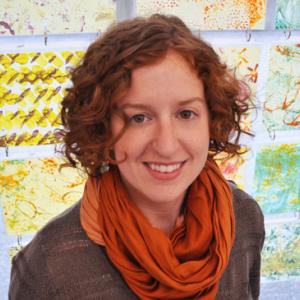Andy Goldsworthy-Inspired Art from Nature
In the Art Studio, two of our main goals are for our students and guests to see materials in new ways, and for them to leave The Carle knowing those materials better than they did before. We do this by providing opportunities for guests to enter into conversation with materials through the creative process of making and re-making again. The ephemeral quality of natural materials lends well to this process. There are many interesting artists who work with nature and naturally found materials, but if you’ve never investigated artists whose work uses the environment, you might start with Andy Goldsworthy.
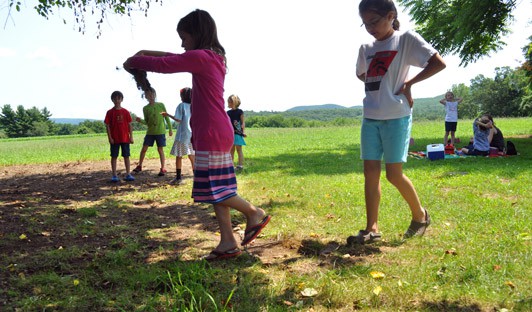
We have a DVD of the film Andy Goldsworthy’s Rivers and Tides, and before lunch on the last day our summer program Animals, Art and the Imagination, we played it on the TV in the corner of the room while the students finished various projects from the week. In this film, Goldsworthy shows videos of some of his site-specific natural artworks and talks about how they are created in consideration of, and impacted by, time and weather. He talks about listening to his natural materials, figuring out what they can and can’t do. He gets to know a material better by having to make and remake a piece over and over if it topples as he works. Since his creations are natural and exist in nature, their place in the cyle of life around them is an equally important part of the work.
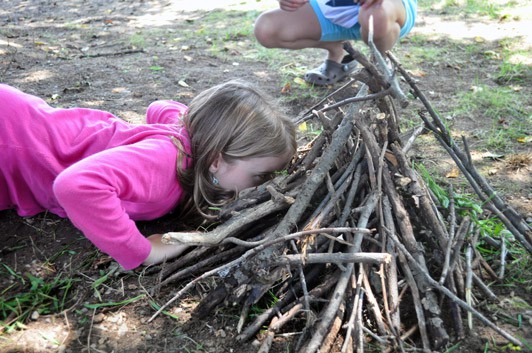
A couple of students expressed their disinterest in the film shortly after turning it on, and some only picked their heads up from their work periodically, but we knew they were listening. Yet a few more were entranced and wondering aloud as they watched.
We didn’t have a plan as to how the film would tie into the day’s work, since it was playing in the background, but trusted that for some, having heard or seen Goldsworthy’s film would be a seed planted for another time.
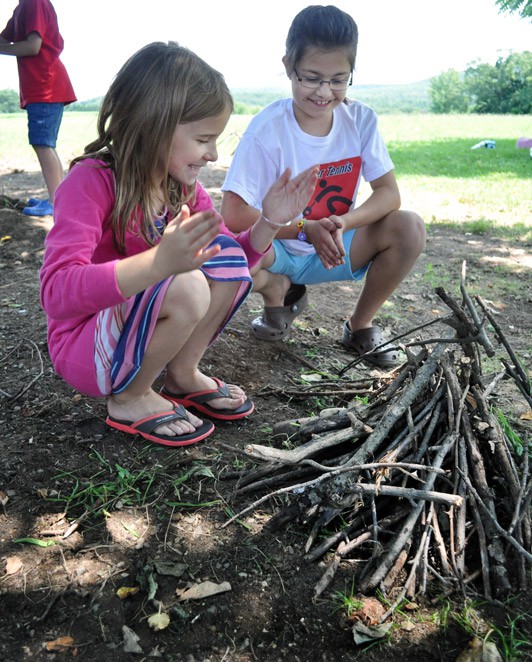
Sometime after lunch in a magical little spot between the staff parking lot and an open field, nestled between old apple trees and various local bushes, someone spotted a big pile of sticks and immediately made a connection to what they had just seen. Her interest sparked someone else’s, and before we knew it, everyone was either individually or collaboratively creating with the sticks in the area in which they were found. They were experimenting with balance, scale, point of view, light, shadow, and texture. Because this was the last day of the program, we couldn’t come back to check on their work, but would have if this happened earlier in the week. If that was the case, while visiting their artworks I would have asked the students: What’s going on here? What do you see that makes you say that? What more can we find? These questions are a part of Visual Thinking Strategies, a method we use within The Carle’s approach to education.
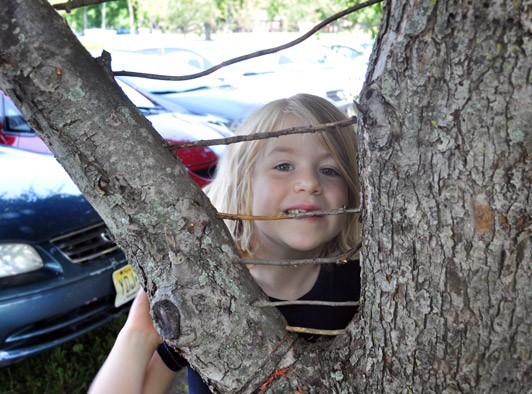
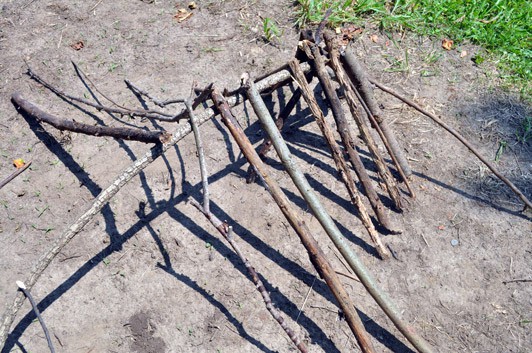
So, go outside! Enjoy nature’s yellow, rust, and red palette that is all around us in New England right now!
Here’s how it might go:
By yourself or with someone else, carefully observe whatever natural materials are around you. Maybe you’ll make a mental or written list of your observations. Study them materials in their natural and then wonder how you might draw attention to something interesting about them. Begin to experiment with how and where things are placed, minding your safety and the safety of the flora and fauna around you.
Try creating something you can observe and document through photos or drawings over time. Children love to revisit work they created outside. Talk to them about what they notice happening and why.
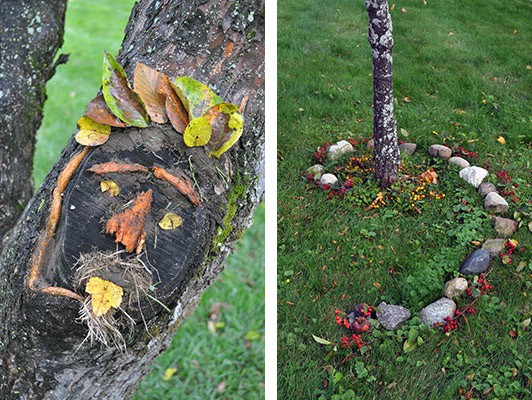
If you need some visual inspiration, want to see other ways we’ve been inspired by nature, or see examples of how we have used nature in our programs, visit the Nature category on our blog or check out Diana’s Bridging Art and Nature pin board

Interested in further research on the importance of the natural world in a child’s life? Here are a few books you might look for:
Childhood and Nature: Design Principles for Educators by David Sobel.
Last Child in the Woods: Saving Our Children From Nature-Deficit Disorder by Richard Louv.
I Love Dirt!: 52 Activities to Help You and Your Kids Discover the Wonders of Nature by Jennifer Ward.

